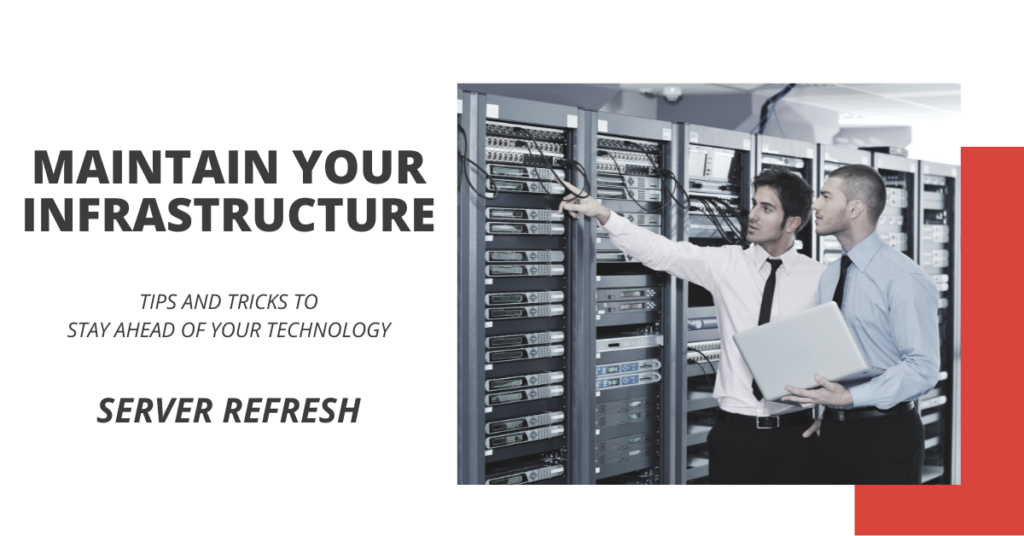In this episode of Tips and Tricks of the Week, we provide an overview on server refreshes. It is important for companies to consider upgrading and replacing their servers often so that they can minimize costs and maximize productivity.
WHAT IS A SERVER REFRESH?
A server refresh is as simple as it sounds – the replacement and installation of new servers and related hardware. Usually, servers are replaced every three to five years and allow organizations to deploy updated equipment that improves reliability, data capacity and saves costs.
WAYS TO KNOW IT’S TIME TO REPLACE YOUR SERVER
- Diminishing performance. If your server is running slower than usual and isn’t keeping up with the workload, it may be time for a replacement. You can upgrade parts, such as the CUP, hard drive and memory, but ultimately you’ll need to purchase an entirely new machine that has entirely up to date hardware and specs.
- End of lifecycle. Simply put, older machines require increased operation and maintenance cost and have higher fail rates and diminished performance. By refreshing your server every three years, you will avoid a substantial amount of costs related to operating older, out-of-date machines.
- Increased costs. The longer you use a server, the more likely it is to break and require repairs. That means increase in IT staff time, lost productivity, increased support calls and costly unplanned downtimes. Additionally, older servers have parts that may not be easily replaced.
- Expiring warranty. It is very important that your server remain under warranty. If a warranty expires, your business incurs significant risk. Remember, your server stores a substantial amount of data that keeps your business running, so you don’t want to face the possibility of not being able to repair a server when it is needed most.
- The newest servers come with the most compatible firmware updates and patches. This protects your company against malware and cybersecurity exploits and helps maintain compliance. Older servers are no longer compatible with new updates, so, again, you’re running the risk of malfunctioning, or worse, a cyber attack.
CONSIDER AN UPGRADE TO THE CLOUD
Today’s technology environment is constantly evolving, and business’ needs are too! A migration to the cloud offers a less expensive alternative for data storage and hosting, as well as the flexibility for scalability and updates over time. Additionally, when you store your data on the cloud, you eliminate the need for on-premises devices, and therefore save on space and expenses. Lastly, since a large portion of today’s workforce operates remotely,
Like what you see? CLICK HERE to join our Tips and Tricks of the Week email list!

